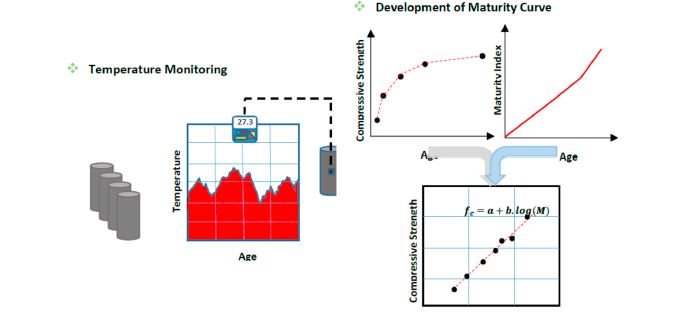Giatec would like to recognize Najeebullah Tareen, Junkyeong Kim, Won-Kyu Kim, and Seunghee Park of Sungkyunkwan University for their incredible research regarding the strength estimation of fresh concrete based on ultrasonic wave propagation and maturity. In their academic research, they used SmartRock® sensors to access data regarding the hydration temperature history.
Explore 12 Futuristic Technology Trends Solving Concrete's Biggest Challenges.
Abstract
Recently, the early-age strength prediction for RC (reinforced concrete) structures has been an important topic in the construction industry, relating to project-time reduction and structural safety. To address this, numerous destructive and NDTs (non-destructive tests) are applied to monitor the early-age strength development of concrete. This study elaborates on the NDT techniques of ultrasonic wave propagation and concrete maturity for the estimation of compressive strength development. The results of these comparative estimation approaches comprise the concrete maturity method, penetration resistance test, and an ultrasonic wave analysis. There is variation of the phase transition in the concrete paste with the changing of boundary limitations of the material in accordance with curing time, so with the formation of phase-transition changes, changes in the velocities of ultrasonic waves occur. As the process of hydration takes place, the maturity method produces a maturity index using the time-feature reflection on the strength development process of the concrete. Embedded smart temperature sensors (SmartRock) and PZT (piezoelectric) sensors were used for the data acquisition of hydration temperature history and wave propagation. This study suggests a novel relationship between wave propagation, penetration tests, and hydration temperature, and creates a method that relies on the responses of resonant frequency changes with the change of boundary conditions caused by the strength-gain of the concrete specimen. Calculating the changes of these features provides a pattern for estimating concrete strength. The results for the specimens were validated by comparing the strength results with the penetration resistance test by a universal testing machine (UTM). An algorithm used to relate the concrete maturity and ultrasonic wave propagation to the concrete compressive strength. This study leads to a method of acquiring data for forecasting in-situ early-age strength of concrete, used for secure construction of concrete structures, that is fast, cost effective, and comprehensive for SHM (structural health monitoring).







